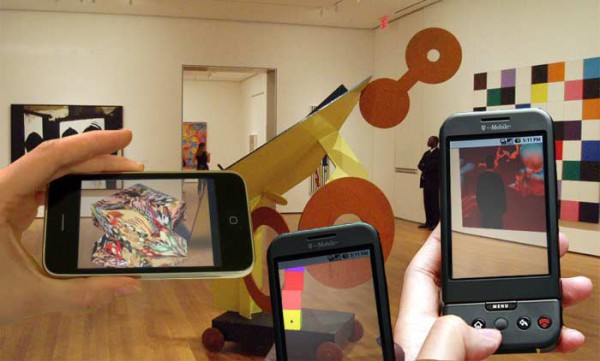17th December 2019 in 16:49
Tags: apps, AR/VR, Augmented Reality
The presentation at the Museum in the 21st Century conference, the topic of augmented reality is of great interest. We have prepared an article on the use of augmented reality in museum business. We present you the full text of the article.
Museums around the world are exploring the possibilities of new interactive technologies to attract visitors and increase their engagement. The modern IT technology market offers a variety of innovative solutions for museums: holographic screens and pyramids, virtual guides, touch kiosks, interactive stands and books. Augmented reality occupies a special place among them. The technology opens up unprecedented opportunities to reconstruct any environment, build a breathtaking visual range, and actively engage the viewer in communicating with the museum.
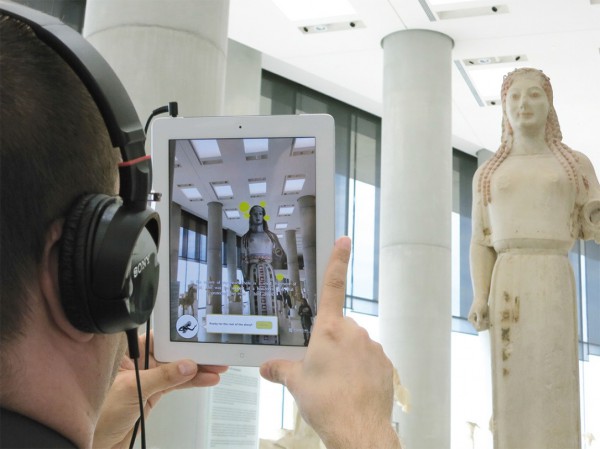
Now there are about 4.5 billion mobile phones in the world and half of them have a built-in camera and a connection to the mobile Internet. These figures clearly demonstrate the huge number of people who can use the technology of augmented reality.
Augmented reality (AR) is a technology that allows a person to see the real world around them, supplemented by any contextual information: reference information, video, audio or 3D models. Using augmented reality projects is very simple.
You need to point the camera of the mobile device to the object and wait for the appearance on the screen of text comments, photos, videos or all together. Why do museums need augmented reality? Here are a few reasons.
1.Instant access to information
In the modern world, everything happens quickly, the pace of life is accelerating. And a person very much appreciates the possibility of instant information on a question that interests him right now. Arriving at the museum and simply pointing the mobile device at the exhibit, the museum visitor immediately receives comprehensive information: he sees a fragment of an archived video, a restored 3D model of the relic, the process of creating a work of art.
2.Visibility
For the new generation that has grown up in the media, the visual component is especially important. You point the smartphone camera at the ruins and on the screen you see the ancient structure in all its former splendor. Augmented reality makes it possible to immerse the visitor in any historical era and clearly illustrate any events, show masterpieces in the reconstructed historical environment: sphinxes in the sultry Egyptian desert or sculptures in the Florentine gardens of the Medici.
3.Unlimited access to any exhibits.
It is impossible to place absolutely all information about each exhibit in museum halls . The only way to find out the details is to listen to a professional guide or an audio guide. But in both cases there is no way to show additional videos, photographs. The reconstruction of completely or partially lost works of art is of particular interest, allowing you to see how these works looked before destruction or change. ugmented reality allows you to push the boundaries of the exhibition, show a huge amount of additional information and greatly enhance the emotional impact of works of art on the visitor. No less valuable is the virtual display of relics stored in the archives of the museum.
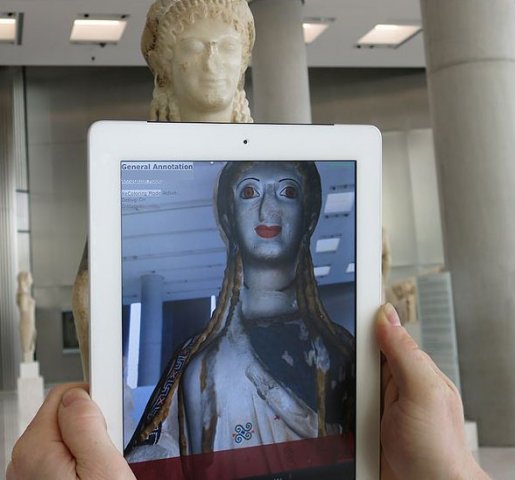
4.Teaching, entertaining
Not many people like to stay long at museum exhibits in order to read voluminous descriptions. Many more people prefer to use audio guides and even more would like to listen to a full guided tour. But this is not always possible due to various factors. Augmented reality is a way of effectively gaining knowledge, a deeper familiarity with exposure. Taiwanese researchers have studied the effectiveness of using augmented reality by observing the behavior of museum groups with various guiding systems. The study showed that after the tour, the greatest awareness and involvement was shown by the group that used the mobile guide with augmented reality. Museum applications using augmented reality can be very entertaining, entertaining, and unusual. Such applications will allow you to learn about the exhibit in an interesting way. Learning through the game and the effect of presence arouse genuine interest.
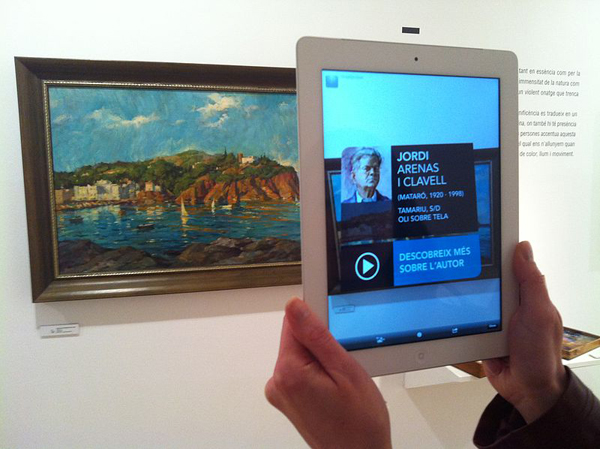
5. WOW factor
Augmented reality is also a wow factor that plays a very important role in shaping the impression of visiting a museum. Modern high-resolution screens allow you to achieve maximum realism of the picture, whether it be a big battle or a demonstration of the work of a complex mechanism.
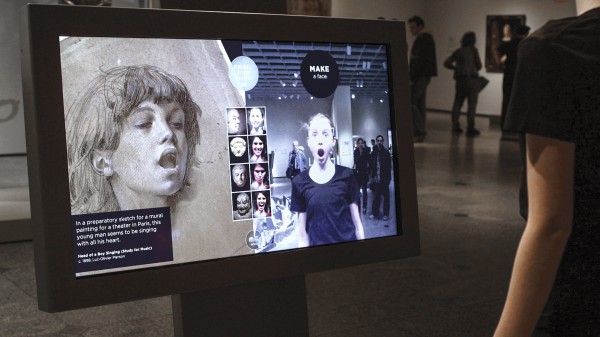
6. Involvement
Difficult for modern people to imagine in what conditions the old masters worked, what tools they used. Augmented reality helps revitalize the picture, show the process of creating a masterpiece. With the help of augmented reality, you can transform entire museum halls, meet with historical figures, study the habits of dinosaurs in their natural environment or examine in detail the comet, the fragments of which are shown in the planetarium. Having directed the mobile device to the old mechanism, you can try it in action – of course, virtually. If during acquaintance with the exposition we use interactive elements when some action is required, and not just passive contemplation, then a person will be not only enthusiastic, but also likely to remember this experience.
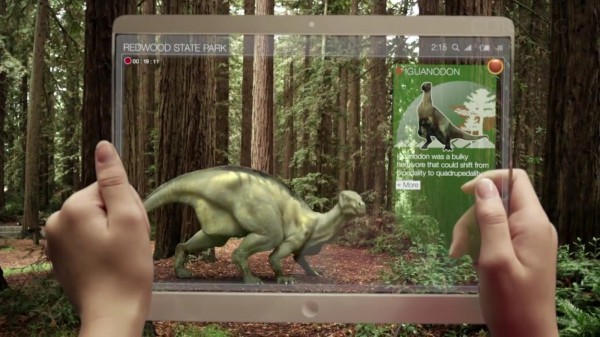
7. Increasing loyalty and expanding the audience
In addition to receiving information directly in the museum, visitors who install the application on their smartphone become closer to the museum. This is a loyal audience that can be informed about new exhibits, promotions and events taking place in the museum. Unusual interactive exposure, causing people surprise, delight, admiration, also have a viral effect. Visitors eagerly share their experiences with friends and acquaintances, share them on social networks and thereby attract new visitors to the museum.
8. Comfortable information retrieval
According to statistics, an ordinary person is more likely to use their own devices to obtain additional information than to seek the advice of a specialist. About 40% of all smartphone owners in the world behave this way. Using a mobile guide will make the tour more personalized and convenient for the visitor. The use of augmented reality in printed materials produced by the museum has great prospects. By placing special tags on postcards and booklets related to the augmented reality application, the museum can make available a huge layer of information about works of art. Films, interesting information, important links – all this can be seen by the visitor to the museum after visiting the exposition, in any place convenient for him.
9. Museum Audience Analysis
In mobile applications, you can use statistical systems that help you understand who the museum’s target audience is. The application collects data, how often they visit the museum, which halls are of the greatest interest, which exhibits are delayed more often. You can even see the gender and age of visitors. Based on this information, you can make plans for visiting the museum, plan exhibitions or events.
10. Profitability
Now many museums practice placing various interactive equipment. But to equip each exhibit with an interactive complex, large investments are required. The role of such an expensive complex can be performed by a smartphone or tablet. After downloading a special application with augmented reality on your smartphone, the visitor receives an excellent personal guide. And for a museum, it’s more efficient and much less costly to use user devices instead of, for example, audio guides.
